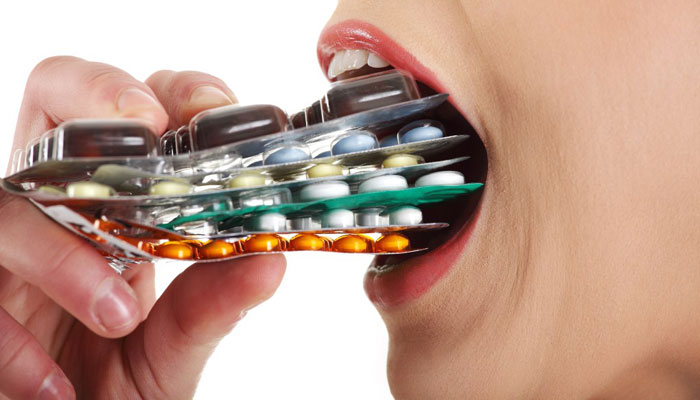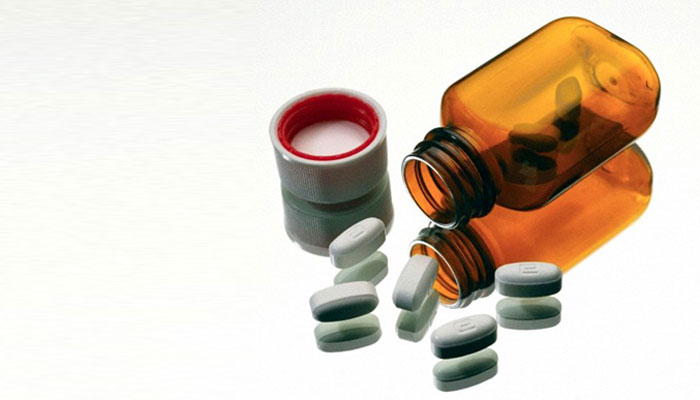Antibiotics: Saviors or killers?
December 01, 2016
From children to adults, the overuse of antibiotics may be killing instead of treating you. Medical experts warn that if present trends of over-consumption continue, we can expect millions to die as a result.
Geo Pakistan took an in-depth look at the issue at hand in attempt to give people a better understanding of what bacteria is and just how dangerous overuse of antibiotics are.
What is bacteria?
Bacteria are single-celled organism and there are at least 10 times as many bacteria cells in a human body as human cells. There are good and bad bacteria. In order to fight the bad bacteria, antibiotics are created using components of the same bacteria. Antibiotics should also be used for a targeted purpose. For example, you cannot use an antibiotic developed for the eye to treat your stomach infection. Also, using broad-spectrum antibiotics is not advised as due to a wider-range of effectives they kill more bad and good bacteria.
The same advice applies to overuse of antibiotics. The overuse of antibiotics has lead to what have come to be known as superbugs. These bugs are undermining the same medication we use to treat our infections. Basically, it is causing our bodies to build greater immunity to infections as well as reducing the efficacy of antibiotics.
Here is how.
Infections evolve over time and our immune system needs to adapt to counter it. Antibiotics can hasten the process but, when overused, the infection builds a resistance to the drug. Thus, in case of emergency, they may prove to not be as effective.

Easy access and increasing consumption
Unfortunately, in Pakistan there are many reasons contributing to this rampant overuse: over-the-counter availability for most antibiotics, some doctors prescribing aggressive antibiotics as first line of treatment, and many people self-medicating. During the last decade, global consumption of antibiotics increased by a whopping 30 per cent.
Experts say between 20 and 50 per cent of antibiotic use is unnecessary.
Yes, up to 50 per cent of antibiotic consumption is not required. That’s a very disturbing statistic. To put this matter into context, we spoke with Dr Nizam Damani who is a consultant with WHO Global Infection Prevention and Control Unit in Switzerland and Dr Faisal Mahmood who heads the Committee for Infection Control at Aga Khan Hospital.
According to Damani the statistics are not the only alarming aspect, in fact what is equally troubling, and may be a major contributing factor, is the easy availability of antibiotics to consumers. Not only are antibiotics readily available at general stores with bread and eggs, but you may also find some at your neighbourhood paan stall!
No doubt, lack of awareness is one thing but buying medicines not just from paan shops but also general stores instead of a pharmacy is a cause of grave concern, the WHO consultant said.
3rd and 4th generation antibiotics being given for minor ailments such as coughs and colds has become common practice. But it is crucial to determine whether the infection being treated is viral or bacterial. Please note: antibiotics are useless if treating a viral infection!
According to the Centre for Disease Dynamics, Economics and Policy, there is a significant worldwide increase in two 'last resort' antibiotics. The first one which has increased is Carbapenems, by approximately 40 per cent, and polymixins, by 13 per cent. Just to clarify, these are the antibiotics that are used when nothing else works. So why then are they being given as a first-line of treatment?
Prevention is the best cure?
Since our main focus here is on bacterial infections surely there are steps that can be taken to prevent infection?
Dr Damani quotes a study published in The Lancet which states that at least 50 per cent of infections can be avoided simply by washing your hands!
Washing hands, sounds easy enough right? And for some it is. Not to play the devil’s advocate but we want to provide a complete picture. With that in mind, our expectation for cleanliness becomes a bit more challenging when we see that 50 per cent of people in Pakistan are without access to proper sanitation.
According to Unicef, the cost of improper sanitation in Pakistan comes with the hefty price tag of approximately Rs144 billion, that is 3.94% of the GDP. And these statistics are from 2010. Efforts for access may have increased but so has the population.
Doctors' role
This would explain one of the causes behind the spread of infection but coming back, let's be clear that our discussion here is about 'antibiotic overuse', not its use in life-saving situations.
Globally, medical experts are emphasising two rules when deciding to take antibiotics. One, that you just avoid them. Two, don't use too much. Sounds simple enough. Why then are doctors so quick to pen down prescriptions?
The answer to that is as dangerous as it is disturbing.
We spoke with a representative who has been part of the pharmaceutical industry for close to four decades. The person spoke with us on condition of anonymity that neither their name nor the organisation they work for will be made public.
The statement they shared with us is as follows.
"Prescribing antibiotics for minor ailments is an easy way-out for doctors. With quacks the situation is worse. But I am also speaking about good doctors many at reputable institutes. They start by prescribing 3rd or 4th generation antibiotics. That is just criminal.
The fault lies with both pharmaceutical companies and with doctors.
Most doctors have deals with pharmaceutical companies who get a percentage of every time they prescribe their drug. These days the going rate is 50-50.
The situation is worse in rural areas where there is no accountability and the deals mostly involve advance cash incentives. Companies also send doctors for trips abroad."
Here we would just like to add that according to a study published in 2013 in the International journal of physiology, pathology and pharmacology for a hospital in Hayatabat only 15% of antibiotics were prescribed on generic name while 85% were prescribed on the basis of brand names. This means that 85 per cent of the time doctors told patients exactly which brand of medication they should purchase and instead of any drug which had the same chemical composition.

Not only dangerous but deadly
It is estimated that the 10 million people would die as result of antibiotic over use by the year 2050 costing 66 trillion pounds according to WHO.
It would be unfair to just say the fault behind overuse of antibiotics lies solely with pharmaceuticals who offer doctors’ incentives or with doctors who unnecessarily prescribe them. The fault also squarely lies with people who self-medicate or insist that their doctors prescribe them and their children antibiotics.
Self-medicating
Antibiotics are not like blood pressure medication, Dr Faisal Mahmood poignantly points out. You cannot just repeat the same course next time or use any previous dosage to treat a current ailment. A doctor must properly investigate and determine the cause and type of infection then prescribe a targeted antibiotic with a specific dosage and timings.
Recommendations
After speaking to a panel of experts we have the following six recommendations.
- Reduce the need for antibiotics through improved water, sanitation and immunisation
- Improve hospital infection control and antibiotic stewardship
- Change incentives that encourage incentives that encourage antibiotic prescriptions
- Reduce and eventually phase out use of antibiotics in agriculture
- Educate health professionals and policy makers on sustainable antibiotic use
- Political resolve to not only address to handle the issue











